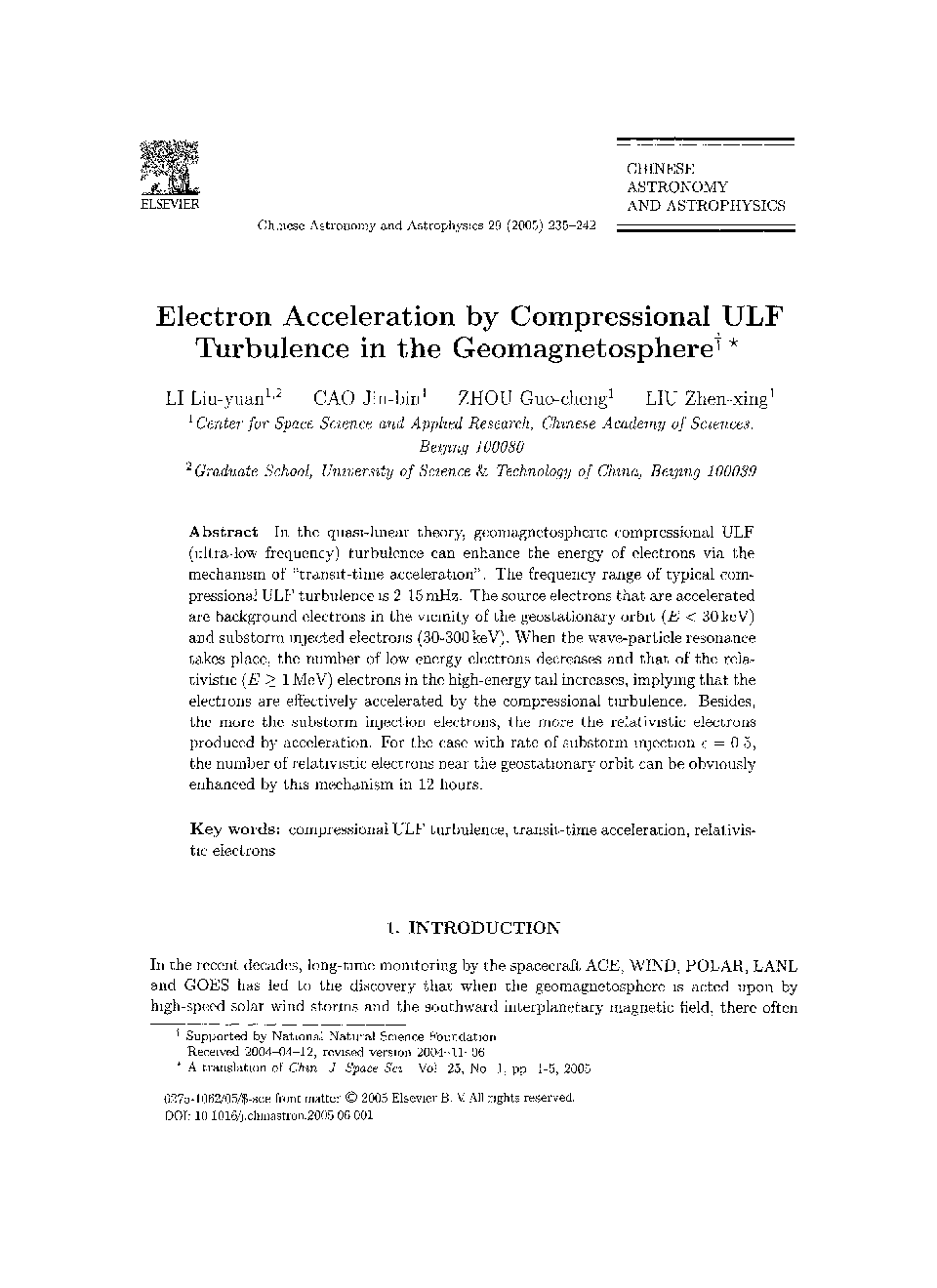| Article ID | Journal | Published Year | Pages | File Type |
|---|---|---|---|---|
| 10700960 | Chinese Astronomy and Astrophysics | 2005 | 8 Pages |
Abstract
In the quasi-linear theory, geomagnetospheric compressional ULF (ultra-low frequency) turbulence can enhance the energy of electrons via the mechanism of “transit-time acceleration”. The frequency range of typical compressional ULF turbulence is 2-15 mHz. The source electrons that are accelerated are background electrons in the vicinity of the geostationary orbit (E < 30 keV) and substorm injected electrons (30-300 keV). When the wave-particle resonance takes place, the number of low energy electrons decreases and that of the relativistic (E ⥠1 MeV) electrons in the high-energy tail increases, implying that the electrons are effectively accelerated by the compressional turbulence. Besides, the more the substorm injection electrons, the more the relativistic electrons produced by acceleration. For the case with rate of substorm injection ε = 0.5, the number of relativistic electrons near the geostationary orbit can be obviously enhanced by this mechanism in 12 hours.
Keywords
Related Topics
Physical Sciences and Engineering
Physics and Astronomy
Astronomy and Astrophysics
Authors
Li Liu-yuan, Cao Jin-bin, Zhou Guo-cheng, Liu Zhen-xing,
